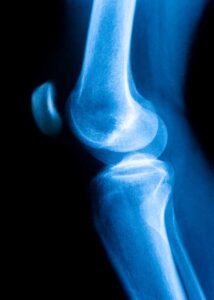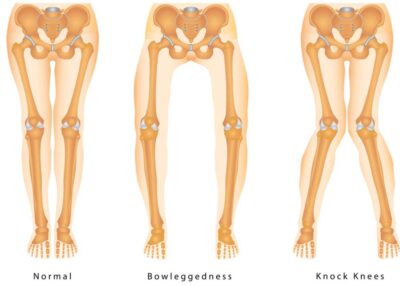Malalignment Knee Specialist

Have you been diagnosed with knee malalignment syndrome? Do you have knee pain from running, sitting for prolonged periods of time, or from walking up or down stairs? If so, you may have a condition known as miserable malalignment syndrome. Miserable malalignment syndrome specialist, Doctor Riley J. Williams provides diagnosis as well as surgical and nonsurgical treatment options for patients in Manhattan, Brooklyn, New York City and surrounding areas who are suffering from the symptoms of knee malalignemnt. Contact Dr. Williams’ team today!
What is knee malalignment (miserable malalignment) syndrome?
The knee is comprised of three bones: the femur (thighbone), tibia (shinbone) and patella (kneecap) as well as cartilage, tendons and ligaments. There are two joints within the knee: the tibia-femur joint and the patella-femur joint. Knee malalignment syndrome occurs when there is poor positioning between either of these joints. In knee malalignment of the patella-femur joint, the kneecap often feels like it is slipping or dislocating. This type of malalignment is also referred to as patellar instability. In knee malalignment of the tibia-femur joint, abnormal knee angulation can create uneven pressure on one the affected knee. Either of these types of knee malalignment can put an individual at higher risk for knee injuries such as dislocation and osteoarthritis. Knee malalignment syndrome can occur both athletic and non-athletic patient populations. Individuals who participate in running and high impact sports may experience significant pain and decreased function in association with knee malalignment. Tibia-femur malalignment can give the appearance of genu valgum (knock knee) or genu varus (bow-legged). Genu valgum displays when an individual is standing straight up, their knees are together, and their feet and ankles appear spread apart. Genu varus is shown when an individual is standing straight up, their knees are apart (lower legs curve outward from the knee), and their feet appear to touch. Genu valgum and genu varum can occur as a result of birth related issues, follow a traumatic accident, or a be associated with the aging process. Dr. Riley J. Williams, orthopedic knee specialist serving Manhattan, Brooklyn, New York City, NY and surrounding areas has extensive experience in diagnosing and treating knee (miserable) malalignment syndrome as well as many other knee malalignment ailments.
What are the symptoms of a patella knee malalignment syndrome?
Knee pain may worsen when from running, squatting, sitting for long periods of time, or going up and down stairs. Symptoms may include:
- Knee stiffness
- Grinding or clicking sounds when the knee is extended
- Knee giving out unexpectedly
- Pain under the kneecap
- Knee locking or catching
- Excessive pronation when running

What are the symptoms of tibia-femur malalignment syndrome?
- Excessive angulation of the knee
- Knee pain
- Knee swelling
How is knee (miserable) malalignment syndrome diagnosed?
Dr. Williams will visually examine the alignment of the knees by doing a gait analysis while the patient walks. Malalignment will show the lower leg bone rotating outward with little to no inward rotation; the upper portion of the leg rotates in, with little or no outward rotation. Dr. Williams may also order x-rays and an MRI to determine if there is an injury to the bone or soft tissue within the knee. He will then be able to determine what type of treatment will be necessary to correct or improve the disorder.
What are the treatment options for malalignment of the knee?
Non-surgical treatment:
Conservative treatment methods will require the patient to stop exercises or to discontinue activities that could cause excessive wear and tear on the knee. Low-impact sports, such as swimming, are better methods of exercising versus running. Rest and NSAIDs (non-steroidal anti-inflammatories), such as ibuprofen, can alleviate pain and swelling. Physical therapy and strength training exercises can also help strengthen muscles surrounding the knee to take excess pressure off the injury site.
Surgical treatment:
Surgery may be required if conservative methods fail, and knee pain continues. Persistently painful knee malalignment patients will need mechanical correction of their poorly aligned knee. Surgical methods can involve:
- An osteotomy or cutting of the bone. The cut is typically a partial cut. This cut allows the surgeon to realign or move the bone into a better mechanical position. The realigned bone is often stabilizing with strong metal plates and screw.
- Three types of knee osteotomy used for knee malalignment are:
- High Tibial Osteotomy – This procedure involves partially cutting the the top portion of the tibia (shin bone) to move the bone and to realign the knee.
- Femoral Osteotomy – This procedure involves partially cutting the bottom portion of the femur (thighbone) to move the bone and to realign the knee.
- Tibial tubercle osteotomy – This procedure involves partially cutting the top of the tibia where the patellar tendon inserts on the bone. Moving this small portion of the tibia can help to stabilize a dislocating knee cap or unload a persistently painful knee cap.
For more information on miserable malalignment syndrome and the treatment options available, please contact the office of Riley J. Williams, MD, orthopedic knee specialist serving Manhattan, Brooklyn, New York City, NY and surrounding areas.
Locations
610 W 58th Street
New York, NY 10019
148 39th Street, 7th Floor
Brooklyn, NY 11232



